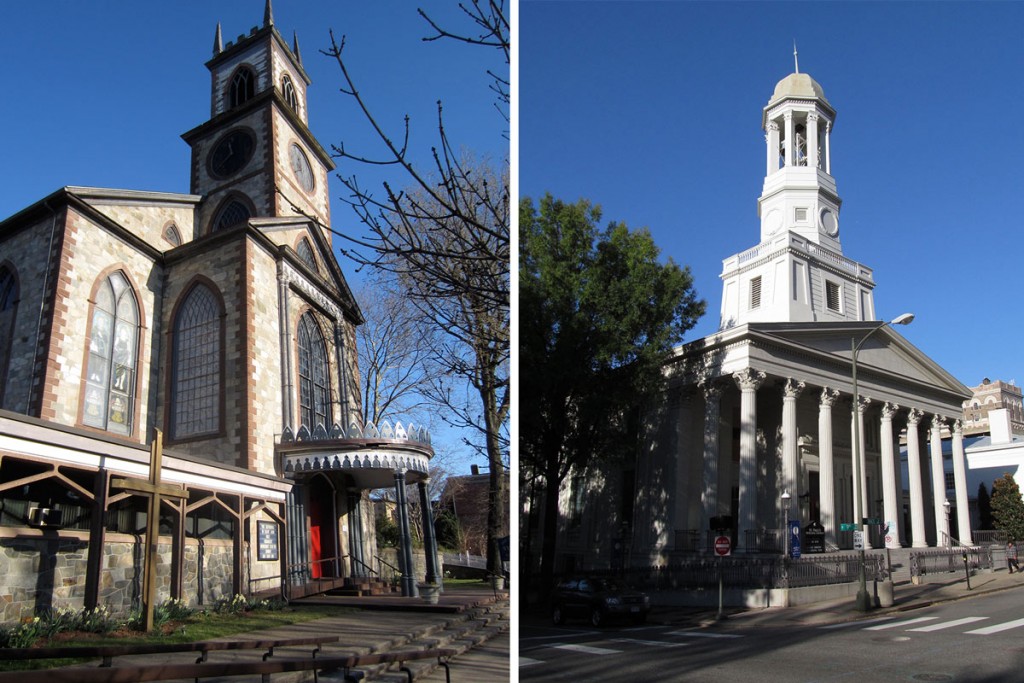Left: Cathedral of St. John, photo Max Binder. Right: St. Paul’s Episcopal, photo Morgan Riley
The Cathedral of St. John in Providence, R.I., closed in 2012, will reopen as a racial reconciliation center and a museum focused on the history of slavery in Northern states.
The New York Times spoke to Bishop W. Nicholas Knisely about how his diocese is confronting a complex history.
From the article:
“I want to tell the story,” Bishop Knisely said, “of how the Episcopal Church and religious voices participated in supporting the institution of slavery and how they worked to abolish it. It’s a mixed bag.”
The idea for the museum came out in community discussions, and has been accelerated by the energy surrounding the nationwide protests against police violence and the #BlackLivesMatter movement. More information on the plans are available at the NYTimes site, and you can read about the idea behind this on an old blog entry at the Tracing Center.
In Richmond, capital of the Confederacy, another church wrestles with their legacy. St Paul’s Episcopal Church is discussing the Confederate imagery incorporated into their stained glass windows, kneelers, and memorial plaques. A catalog is here.
Some of the imagery recasts Civil War generals as Old Testament figures.
From the article:
Both men (Confederate President Jefferson Davis and Gen. Robert E. Lee) are memorialized in stained-glass windows. One window depicts Lee as Moses, “in the attire of a prince turning away from the house of Pharaoh and dropping his wand of office,” according to a church history, “Windows of Grace, A Tribute of Love.” The book says the window is a reference to Lee’s decision to turn down an offer to command the Union forces.
Davis is portrayed in chains as St. Paul before King Herod Agrippa. “This biblical event alludes to Jefferson Davis’ own two-year imprisonment following the Civil War,” according to the book.
The article mentions other Episcopal churches addressing the same issues, and notes that nothing conclusive has been decided; St. Paul’s is working with a professional facilitator, and has established a process for the congregation and the vestry to work through before making any changes.
Is your church having these conversations? Are you thinking about your own history?

